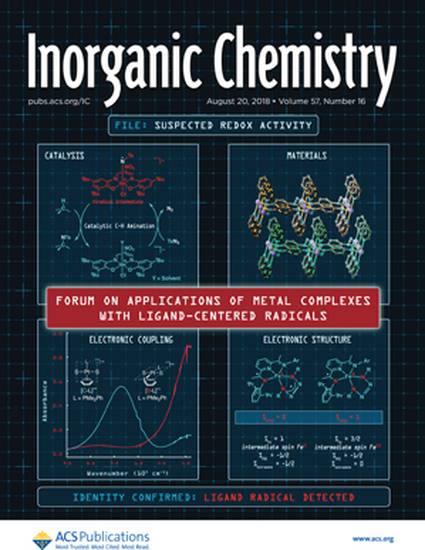
Article
Uncoupled Redox-Inactive Lewis Acids in the Secondary Coordination Sphere Entice Ligand-Based Nitrite Reduction
Inorganic Chemistry
(2018)
Abstract
Metal complexes composed of redox-active pyridinediimine (PDI) ligands are capable of forming ligand-centered radicals. In this Forum article, we demonstrate that integration of these types of redox-active sites with bioinspired secondary coordination sphere motifs produce direduced complexes, where the reduction potential of the ligand-based redox sites is uncoupled from the secondary coordination sphere. The utility of such ligand design was explored by encapsulating redox-inactive Lewis acidic cations via installation of a pendant benzo-15-crown-5 in the secondary coordination sphere of a series of Fe(PDI) complexes. Fe(15bz5PDI)(CO)2 was shown to encapsulate the redox-inactive alkali ion, Na+, causing only modest (31 mV) anodic shifts in the ligand-based redox-active sites. By uncoupling the Lewis acidic sites from the ligand-based redox sites, the pendant redox-inactive ion, Na+, can entice the corresponding counterion, NO2–, for reduction to NO. The subsequent initial rate analysis reveals an acceleration in anion reduction, confirming this hypothesis.
Keywords
- Cation-induced anion reduction,
- Lewis acidic cations,
- Lewis acidic sites,
- Ligand-based redox sites
Disciplines
Publication Date
August 20, 2018
DOI
10.1021/acs.inorgchem.8b00032
Publisher Statement
Copyright 2019 American Chemical Society
Citation Information
Uncoupled Redox-Inactive Lewis Acids in the Secondary Coordination Sphere Entice Ligand-Based Nitrite Reduction. Kyle T. Burns, Walker R. Marks, Pui Man Cheung, Takele Seda, Lev N. Zakharov, and John D. Gilbertson Inorganic Chemistry 2018 57 (16), 9601-9610
DOI: 10.1021/acs.inorgchem.8b00032
